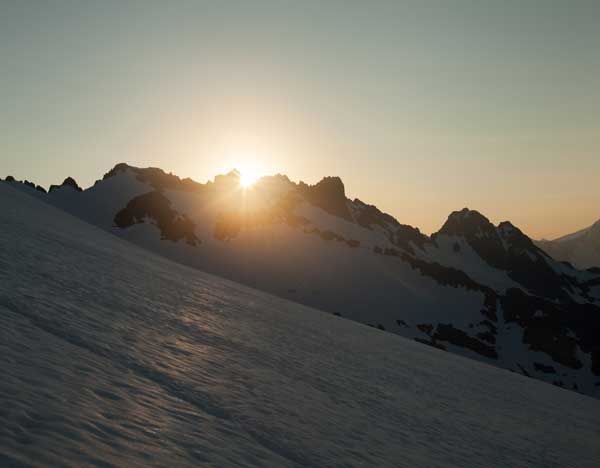
by Courtenay W. Schulman, MS, CSCS
Winter is "in-season" for snow enthusiasts, but "off-season" for everyone else. It's the perfect time to self-assess where you are with your training, set priorities for the next six months, schedule adjustments in your current program, and strengthen your perceived weaknesses — what you can remember as the "Four S's": self-assess, set priorities, schedule, and strengthen.
Self-Assess
What did you accomplish last year? What got in the way? How did you feel on your outings? Did any nagging aches, pains or injuries prevent you from enjoying success? Did family, travel, or work commitments prevent consistent training? Did you recover quickly from adventures so you could continue training during the week? Did your strength increase or decrease during the summer? How about your cardiovascular stamina? Honest answers can help you assess strengths and weaknesses of last year's training program and point in new directions for this year.
Set Priorities
Off-season is the perfect time to focus on your perceived weaknesses — whether you lack strength, need speed, want to learn new skills, or hope to lose weight. Can you practice on a type of terrain or condition where you lack confidence, such as a snow field? Do you need to “fix” your knees so they perform better on descents? Would you like your fingers to be stronger for that sport climb that eludes you? Want to keep up with the 20-somethings? Take a close look at where you are now and what limitations you have in terms of the current condition of your body, the time you have available to train, life commitments that won't go away, and then prioritize your training to focus on those trouble areas in the off-season. If you ran a marathon but struggled hiking uphill with a pack, your focus will be on building strength for long uphill pack carrying periods.
Schedule
Study your weekly calendar and figure out how often you can train, what activities you need to include, and what days you can do each activity. Schedule them, like any other appointment. If you need to shave time off your swim leg for next year’s triathlons, add swim lessons. If you sprint out of the parking lot for the first mile of a climb and lag on the rest of the outing, schedule hiking time to build cardiovascular endurance this spring. If your finger tendons are acting up on you, meet with a physical therapist to get them to heal so that you can develop appropriate strength before your first climbs of the spring.
Strengthen
Finally, once you know how you did last year and what you want to accomplish this year, learn what specific exercises you need to do in order to improve muscle function. If the boulder field on Eldorado left your knees sore for weeks, add quad strengthening exercises like squats and step downs, and work on improving balance in the off-season. If you are nursing finger tendons, work on developing body balance by adding horizontal pushing movements (i.e. push-ups or dumbbell presses), vertical pushing movements (i.e. overhead presses) and horizontal pulling (i.e. seated rows) to complement the vertical pulling so dominant in climbing.
By using the off-season to self-assess, set new priorities, schedule appointments with yourself, and strengthen weak muscle groups, you will be ready to shine come summer.
Courtenay Schurman is an NSCA-CSCS certified personal trainer, Precision Nutrition Level 1 Certified nutrition coach, and co-owner of Body Results. She specializes in training outdoor athletes. For more how-to exercises and tips, visit her website at www.bodyresults.com or send a question to court@bodyresults.com.
This article originally appeared in our Winter 2016 issue of Mountaineer magazine. To view the original article in magazine form and read more stories from our publication, click here.
 Courtenay Schurman
Courtenay Schurman